
One of the things I love about traveling is the opportunity to discover places that showcase distinct ways of life that are totally foreign yet uniquely inspiring or informative.
When Sue and I headed out on our Southern Queensland road trip, our first stop was at such a place: The Woolshed at Jondaryan.
Jondaryan Woolshed is a heritage-listed shearing shed built in 1859 that was once the largest freehold station in Queensland. It passed through several hands, each owner or manager adding their own stamp to the property through additions of land or buildings. Soon the station boasted its own church, St. Anne’s, shearer quarters, a station store, butcher shop, hide and tallow house, and a stable and coach house.
Property owners from miles around brought their sheep to Jondaryan to be shorn. During the 1873 season, 24,000 of the sheep shorn were from other properties. It is believed that over a million sheep have been shorn at Jondaryan over the years.
In January 1946, Jondaryan ceased being station, and in 1972, following the success of celebrations held at the Jondaryan woolshed to mark the centenary of the Jondaryan State School, the owner of the property offered the woolshed and 12 acres of land to the people of Jondaryan.
In 1976 it became an open air museum and tourist attraction. Numerous buildings from the surrounding district have been moved onto the site including an 1850s blacksmith’s shop, a shepherd’s hut from Mt Moriah, the 1880s Lagoon Creek homestead, and a shepherds hut. Visitors can also see the Woodleigh Cheese factory, the Jondaryan Railway Station, a shepherd’s hut from Cecil Plains, a police lockup from Peranga, the Evanslea bagged grain shed, the Oakey Bank of New South Wales, and a railway building from Bongeen, now used as a barber’s shop.
The day Sue and I arrived at Jondaryan, the skies were filled with thick black clouds. And before we’d made it halfway through the station, we found ourselves stranded in the Woodview State School as sheets of rain turned the paths to rivers and the grass to ponds.
It was an excellent building to get stranded in for there were plenty of things to read and the displays inside were interesting. I like how the school desks have slots for the slates to slide down into. No doubt this prevented many a student from losing their slate on the way to and from school and, in the case of students like Anne Shirley and Gilbert Blythe, smashing their slates over each other’s heads.
My other favorite part was exploring the inside of one of the original homestead buildings. In writing the Freestone history book, I learned that early Australian settlers either built kitchens separate from their houses, or lined the cooking area with galvanized iron. Fires were lethal in this tinder dry country, just as they are now, and the early settlers learned to take precautions.
I talked about it with Bear this morning, discussing how sensible it is to build an outdoor or well-ventilated kitchen in this country that is hot so much of the year. It also makes me smile to look at the table, because we have those same tin plates with the blue rims. Excellent, non-breakable dishes for the eating and food prep we do outside.
This is just one end of the Jondaryan wool shed. It is massive!! I love the open plan and soft light, and the addition of chandeliers to fancy it up for various functions makes me happy.
It really is a unique place, full of beautifully restored buildings, informative displays, and fascinating tidbits of history.
Having grown up with my nose perpetually in one or more of the Little House on the Prairie books, it was interesting to compare the history of American pioneers with Australian settlers. Landscape and weather play such a huge role in how cultures develop, and are reflected in everything from attire and transportation to food and traditions.
And I couldn’t help but be charmed by this cheery red building bordered with flowers and greenery. It was once a police lock up in Peranga.
It was definitely worth the stop.
Next time I’ll take you to the Bunya Mountains, where the nights were cold and wallabies grazed next to my tent.
Do you have a favorite open air museum? xo

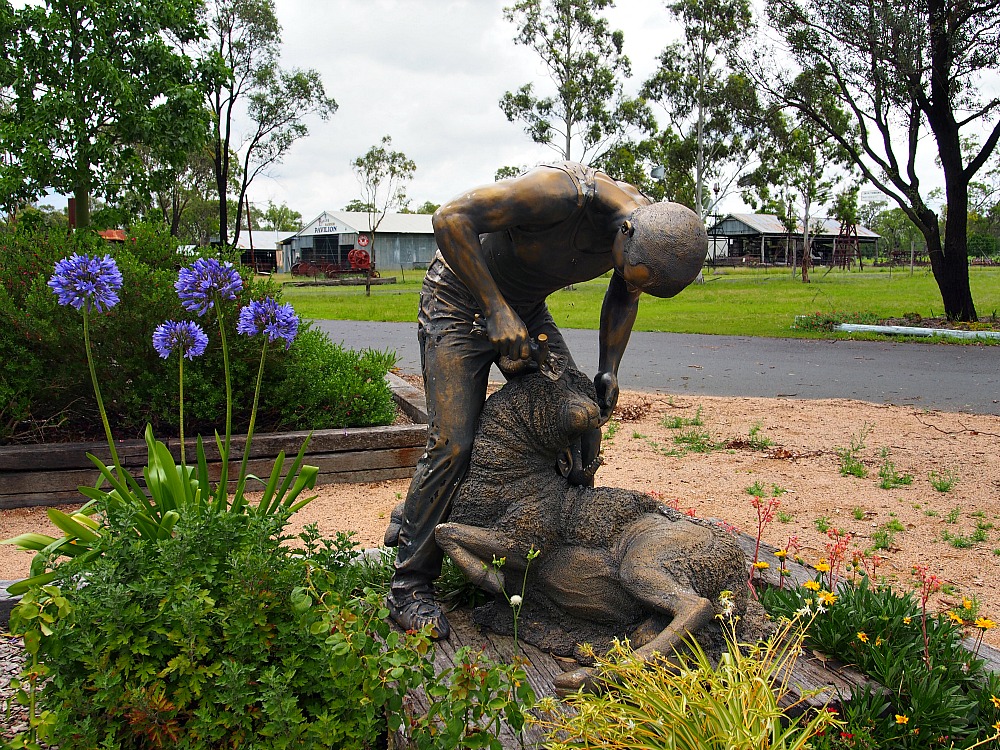
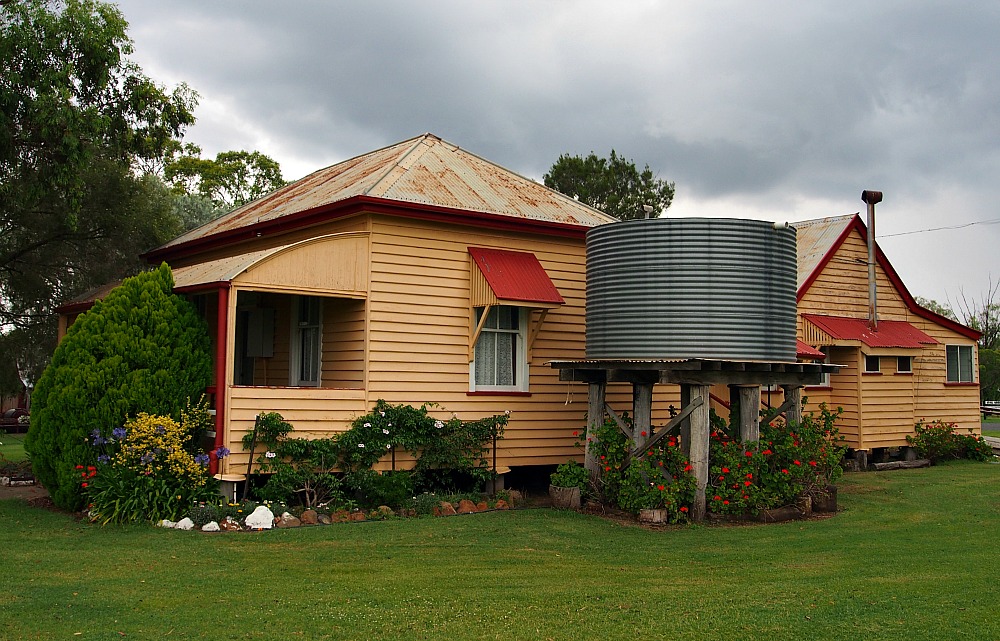
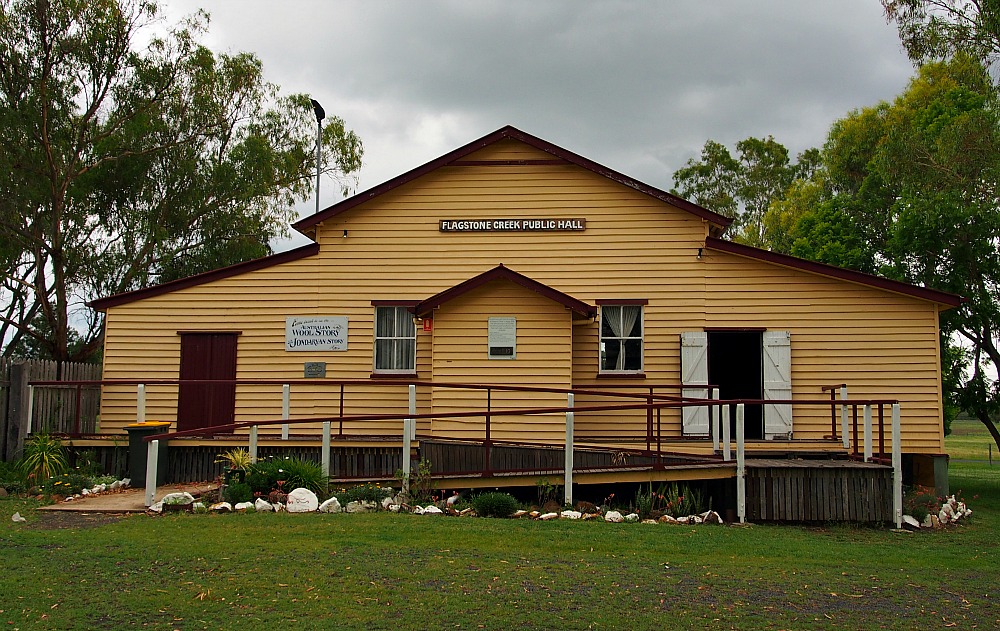
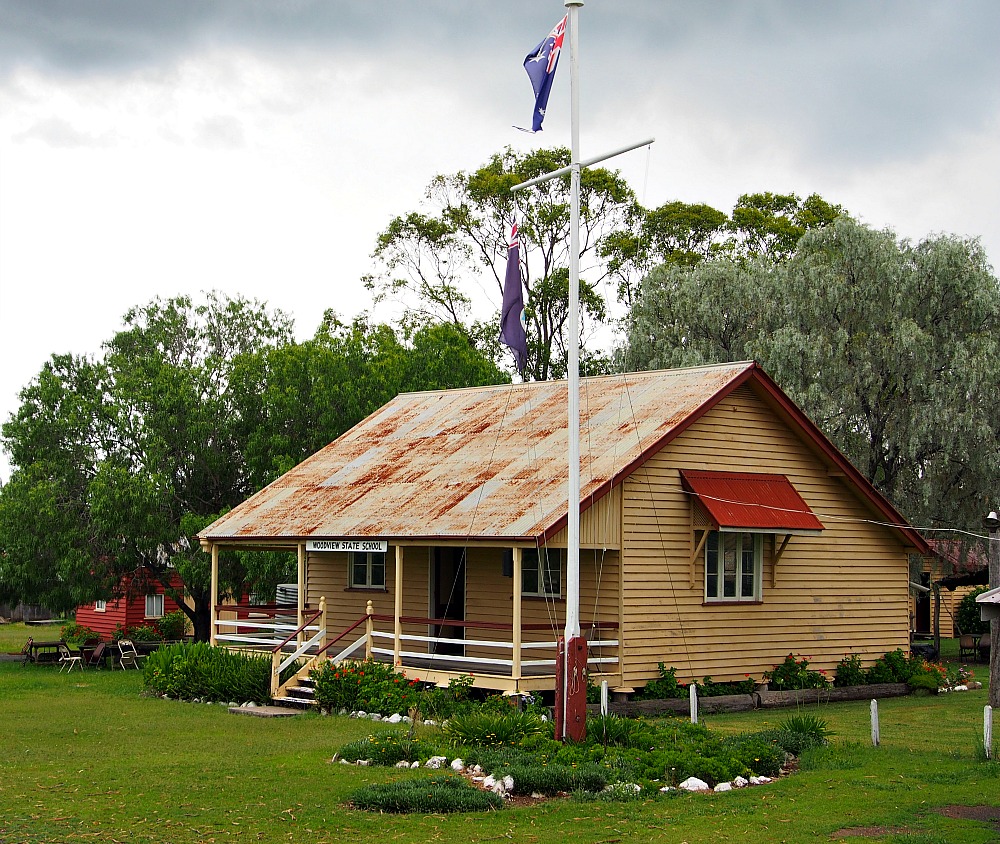
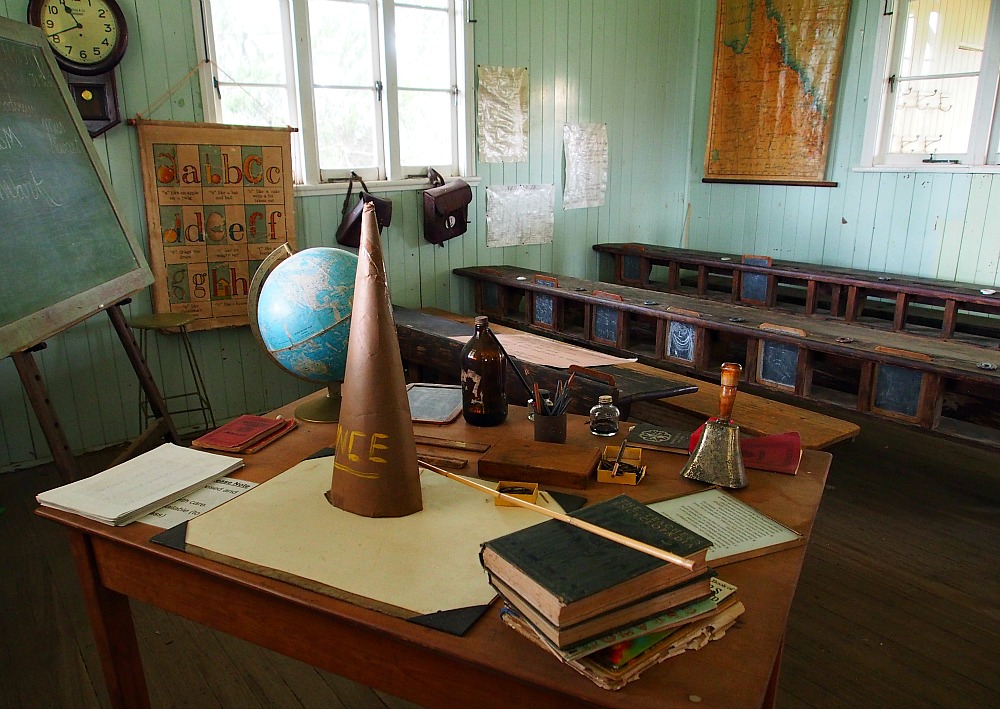
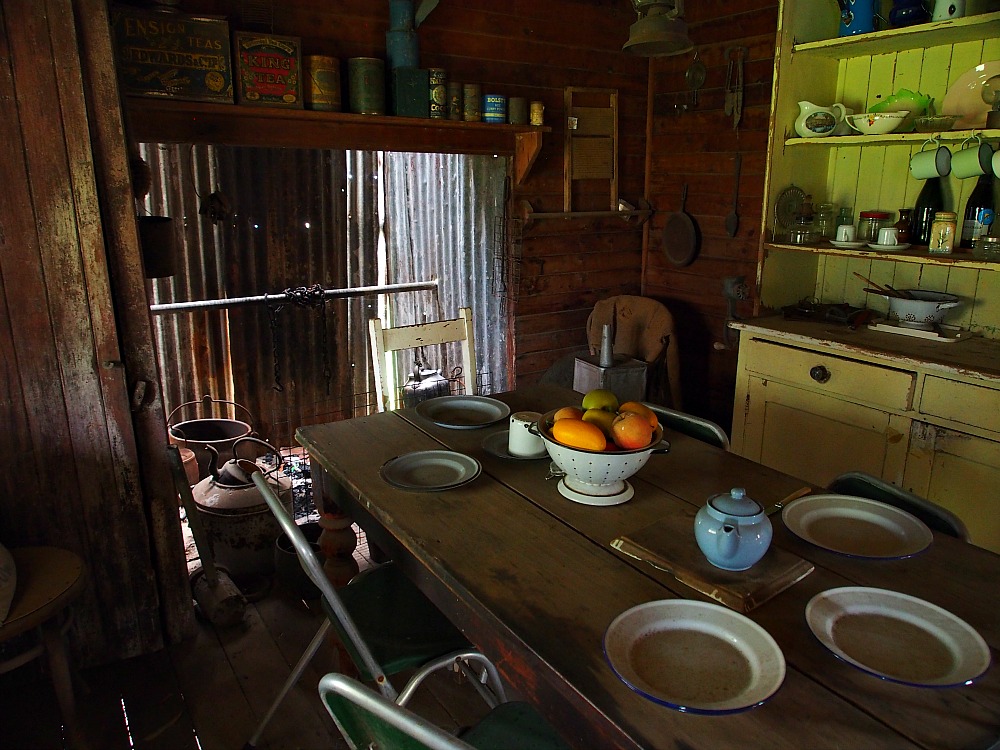
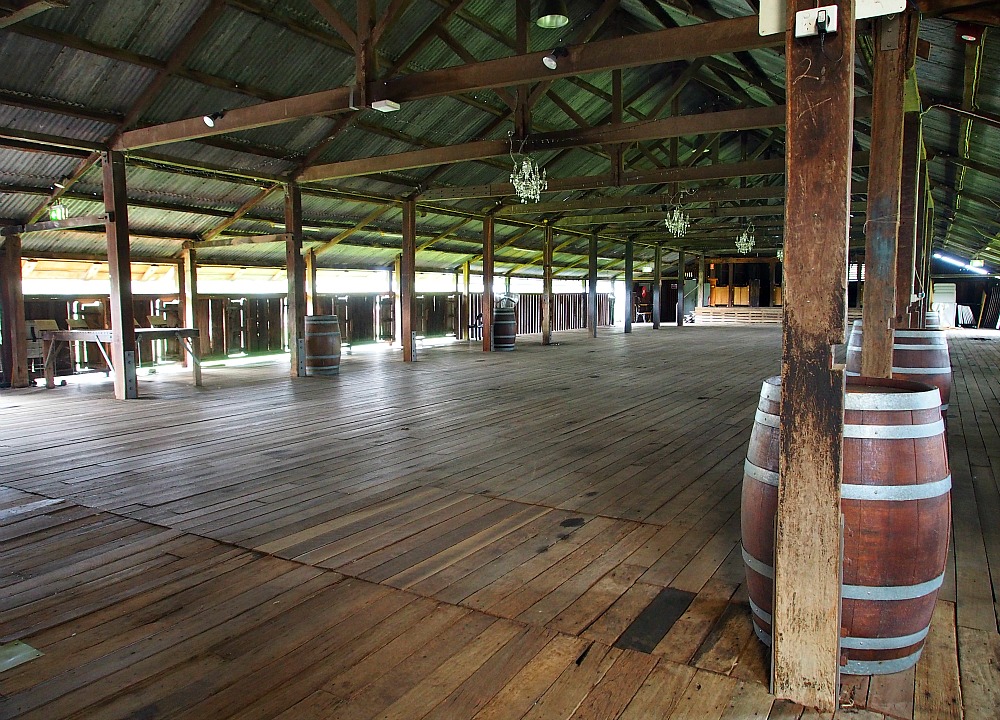
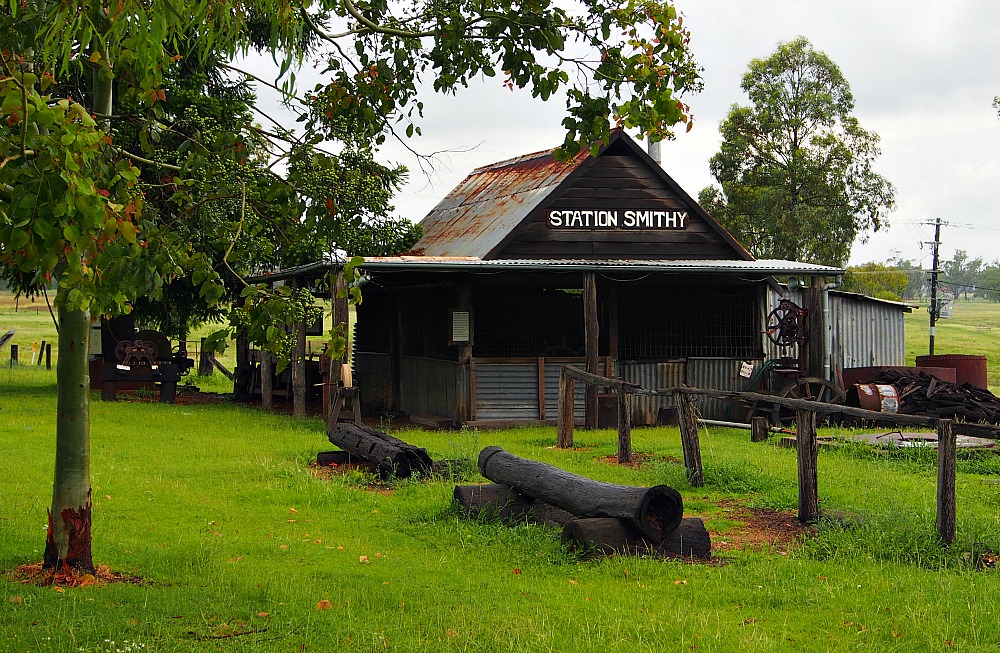
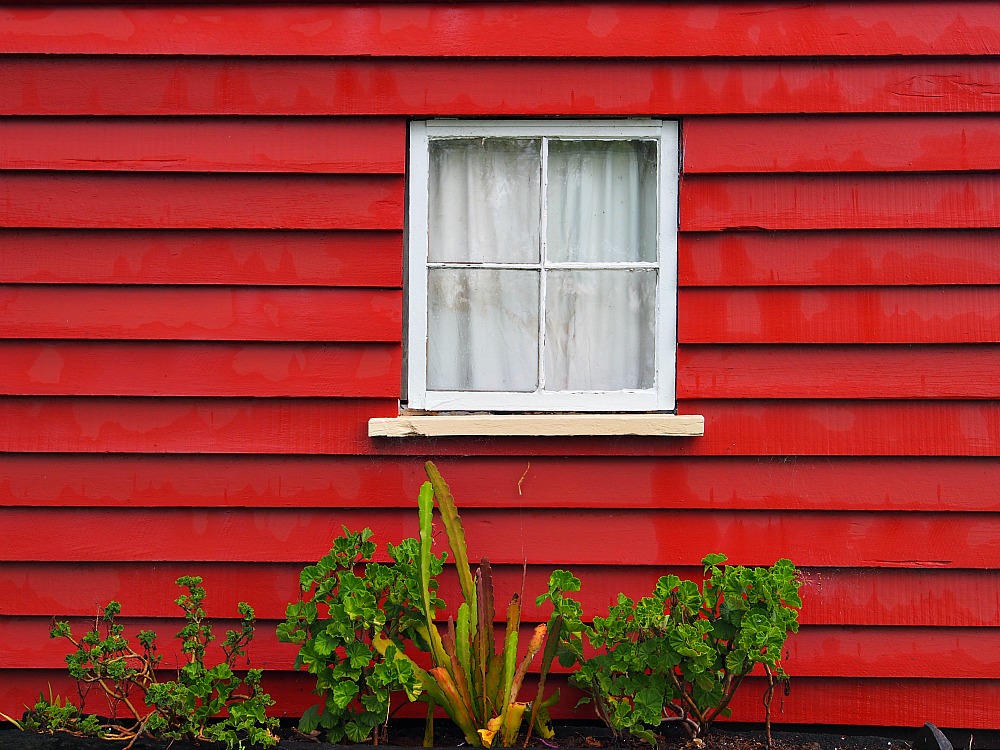
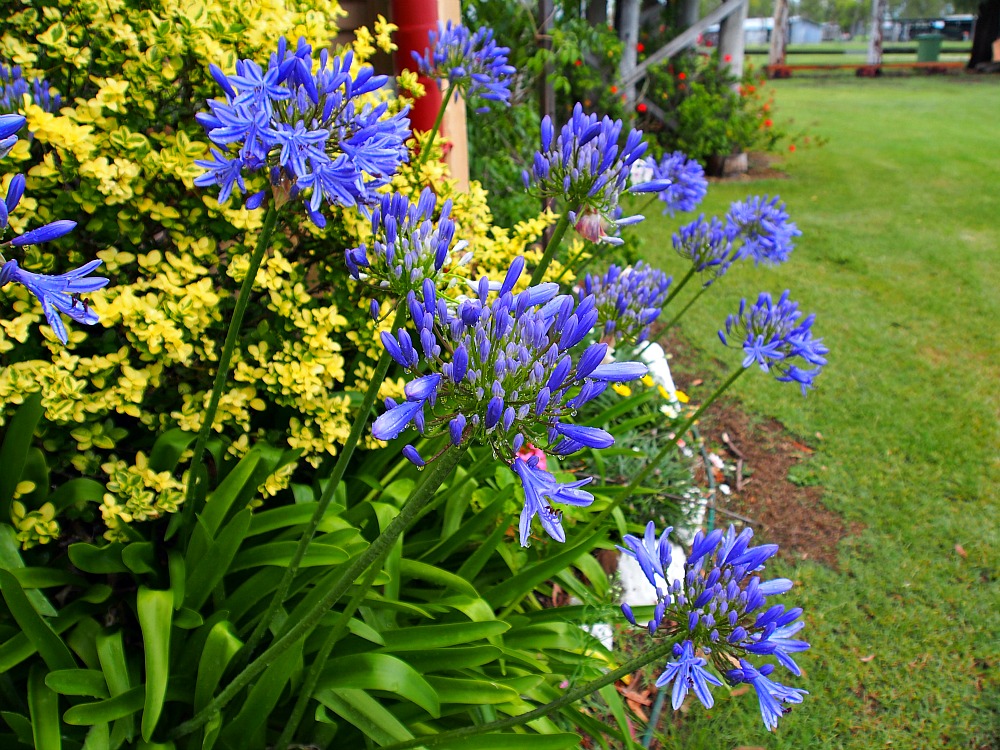
I love seeing how people lived in times gone by. What a great stop ?
I really like the Caboolture Historical Village but I’d love to visit the Woolshed! The school room is wonderful.
This post reminded me of my childhood, my dad was a country mechanic and would work on farms hours from home, my brother and I did home school, so often would finish our school work early and spend our days adventuring these epic properties. They had big ol woodsheds and shearers quarters with knick knacks from families gone. It was awesome. 🙂 Lovely post, thanks for taking me on a trip down memory lane. xo
Love the Chandeliers in the wool shed. As soon as I saw that shed I thought it would be great for functions. I love that red building too.